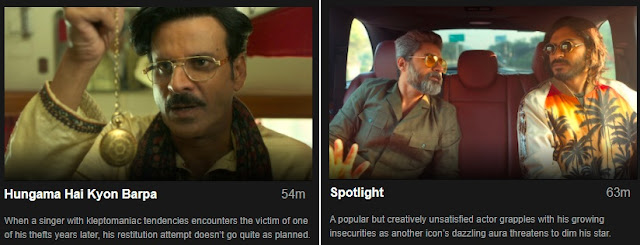Today is Late
Sushma Swaraj’s death anniversary (punya tithi). A stalwart in Indian politics,
she does not need introduction. But one thing that stood out of her was that
everyone could “relate” to her! People saw her as “one of own”. It
was because of her work and views, but also because of her personality. She
sported a prominent ‘bindi’ on her forehead.
 |
Sushma Swaraj always put bindi - mark of Hindu women and sindoor - mark of married women in India.
Now, recently our govt has expanded the cabinet and made many first-time ministers who are women. We now have 11 female ministers. There was a very popular picture shared by the ministers soon after the oath taking ceremony.
I find that Finance Minister Nirmala Sitharaman sports a very small, dot like bindi, and does not sport sindoor most of the time. She is married and has one child.
On the other hand, minister Anupriya Patel almost never sports either bindi or sindoor, despite being married. Anupriya Patel is younger, and perhaps this explains. Many women these days are ashamed of putting bindi and sindoor. Some say that it is due to the influence of Missionary schools who discourage these signs of local religion.
Meenakshi Lekhi at times appears in Bindi and at times does not. And she seldom applies sindoor, at least that is what I can see in the pictures. She is married to Aman Lekhi, a senior advocate in Supreme Court.
Minister Annapurna Devi is a widow and hence she can be seen so as per the local custom among Hindus. Her husband Late Ramesh Prasad Yadav was Minister in RJD’s Rabri Devi Government of Bihar and she entered politics after her husband's untimely demise.
Minister Pratima Bhoumik has never married and hence she appears so. Do you know that she is the first politician from the state of Tripura to join Union Cabinet? Our current government has strong focus on giving voice to the areas who have been under-represented in the past and a strong North East policy. Pratima Bhoumik is popularly known as ‘didi’ (elder sister) in Tripura.
Minister Shobha Karandlaje is never married but applies bindi which is alright since unmarried women can apply ‘bindi’. She is a prominent politician from Karnataka.
Sadhvi Niranjan Jyoti is of course never married; and she uses a religious mark (tilak) on her forehead. She comes from a small village in Uttar Pradesh and we should be proud of her presence in the cabinet.
I find that all other women ministers do apply ‘bindi’ and many also use ‘sindoor’ (though not all).
Dr. Bharati Pravin Pawar is a politician from Nashik in Maharashtra. She is also an MBBS doctor by education and used to work as a medical practitioner. She is the daughter in law of former minister Arjun Tulshiram Pawar.
Mrs. Darshana Jardosh is from Surat, Gujarat. She won her election with a historic margin of 533190 votes which is the highest lead by any woman MP in Indian Electoral History after Indira Gandhi
Mrs. Renuka Singh Saruta is from Chhattisgarh and minister of state of Tribal Affairs.
And I suppose Mrs. Smriti Irani needs no introduction.
As a conclusion, at an overall level I can see that our ministers have used the ‘bindi’ more often but ‘sindoor’ less often.
The popularity of 'bindi' may be because it is very convenient to use - most women use a plastic bindi which has a glue on the backside. Though traditionally women used a bindi created with some home recipe. Sindoor may look inconvenient because there is a chance to 'mess it up' by touching and it would spread on the forehead. But there are some variants, e.g. one comes in a sticky paste format, which can be used even by women who are busy at work.
There is no shame in showing the mark of being married. Keeping a traditional look only makes us looks better, confident and comfortable with ourselves. And when it comes to public fields like "politics", it plays a role like no other. Sushma Swaraj did not keep bindi and sindoor for any political gesture, but it did help her relate to the common masses more.
This
exercise was not to shame anyone for their choice of appearance. It was just a leisurely research
and reality check on the use of popular cultural symbols. We also got to know our ministers better through this exercise. We all should strive
for a society which is not ashamed to keep the harmless traditions and marks of
our culture intact in our daily life. And when it comes to culture, women excel in it more than men.
- Rahul Tiwary
















































